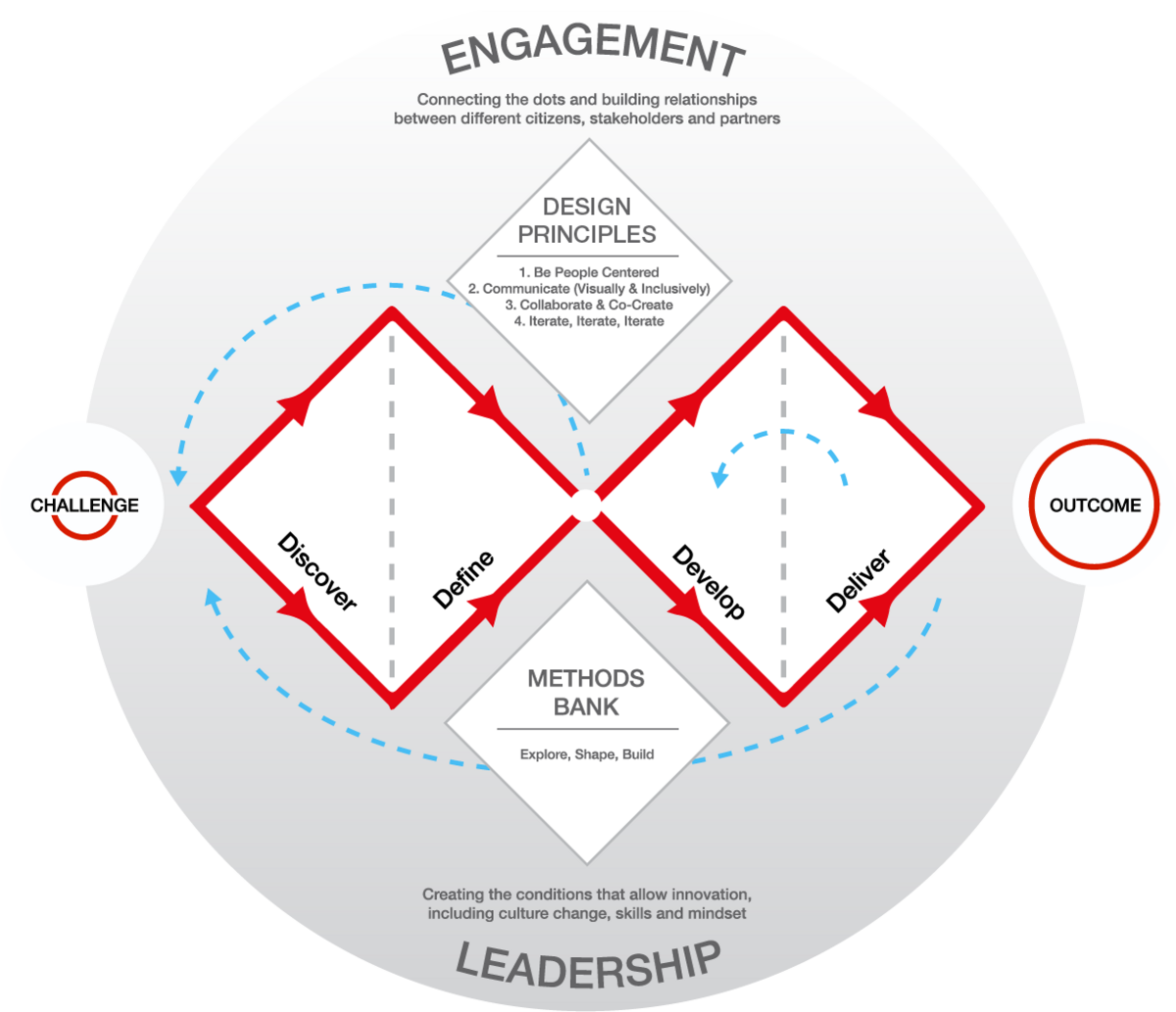Processes and models in interaction
This module covers week 9 of the course.
Note that this material is subject to ongoing refinements and updates!
The IxD process
Four basic parts to the interaction design process:
- Discovering requirements
- Designing alternatives
- Prototyping
- Evaluating
The “double diamond” of design
There are several versions of this framework, but all contain the basic stages of discover, define, develop, and deliver (or similar).

Figure: The double diamond of design. This work by the Design Council is licensed under a CC BY 4.0 license
Understand the problem space by exploring:
- what the current experience is
- why change is needed
- and how this change will improve the situation (more on the problem space below).
Articulating this is a team effort and requires different perspectives. It is important to involve users to help manage expectations, but also in terms of ownership - it makes (some of the) users become active stakeholders. Users can be involved via individual or group activities, or online contributions, or involvement after a product is released.
User-centred design (UCD)
User-centred design rests on the following three principles:
- Early focus on users and tasks
- Empirical measurement using quantifiable and measurable usability criteria
- Iterative design
A simple IxD lifecycle model
Important questions for UCD:
Who are the users/stakeholders?
- What are their needs?
- How to generate alternative designs?
- How to choose amongst these alternatives?
- How to integrate IxD activities with other lifecycle models?
Back to top | © Paul Haimes at Ritsumeikan University | View template on Github